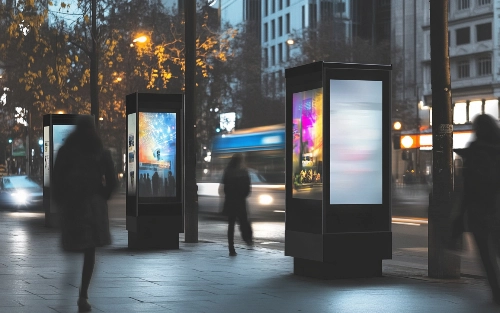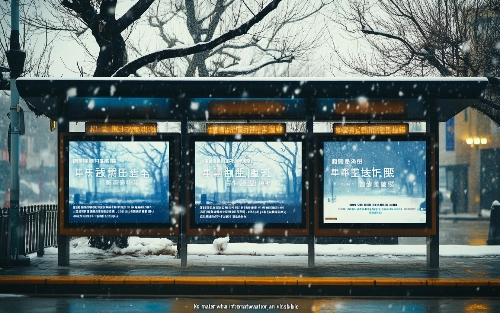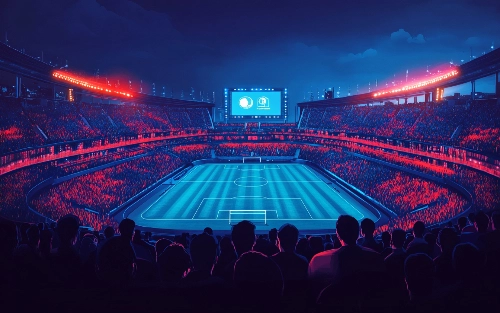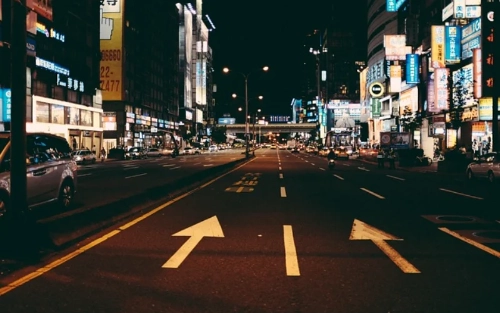
Step into the world of LED display screens, where cutting-edge technology meets captivating visual experiences. From Times Square billboards to sports arenas, LED screens have revolutionized how we engage with content. Dating back to the 1970s, the first LED display screen emerged, paving the way for the vibrant and dynamic displays we see today. These screens offer unparalleled brightness, clarity, and versatility, making them ideal for advertising, entertainment, and information dissemination. Whether indoors or outdoors, LED display screens command attention and leave a lasting impression on audiences worldwide.
Key Takeaways
- Understand the different types of LED display screens available for indoor and outdoor use to choose the most suitable option for your needs.
- Explore various applications of LED displays in different industries to envision how they can benefit your specific use case.
- Pay attention to key specifications such as resolution, brightness, and refresh rate when selecting an LED display to ensure optimal performance.
- Consider features and enhancements like weatherproofing, energy efficiency, and remote management capabilities for a more versatile and user-friendly display solution.
- Factor in viewing distance considerations to determine the appropriate pixel pitch and size for your LED display based on the audience's proximity.
- When finalizing your decision, evaluate the available supports and accessories, along with pricing considerations, to complete your LED display setup effectively.
Types of LED Display Screens
1. Indoor Displays
Indoor LED display screens are designed for close viewing distances, typically used in shopping malls, airports, and control rooms. They have high resolution, starting from P1.53mm, providing sharp and clear images.
These displays offer vibrant colors and excellent brightness levels, ensuring visibility even in well-lit indoor environments. The P1.53mm model is ideal for applications requiring detailed content due to its incredibly fine pixel pitch.
2. Outdoor Displays
Outdoor LED display screens are built to withstand various weather conditions, making them suitable for outdoor advertising, stadiums, and billboards. These screens have a lower pixel density, often starting from P5mm.
P5mm outdoor displays are known for their durability and energy efficiency. They deliver bright visuals that remain visible even in direct sunlight, making them perfect for outdoor settings where visibility is crucial.
3. Unique Features
- P1.53mm Model: This model offers an ultra-high resolution with a pixel pitch of 1.53mm, ensuring unmatched clarity and detail in images and videos.
- P5mm Model: The P5mm model is designed for outdoor use, featuring a pixel pitch of 5mm, making it suitable for larger viewing distances while maintaining image quality.
When choosing between indoor and outdoor LED display screens, consider factors such as viewing distance, environmental conditions, and the intended purpose of the display. Indoor screens are more suitable for close-up viewing with detailed content requirements, while outdoor screens excel in delivering impactful messages in various lighting conditions.
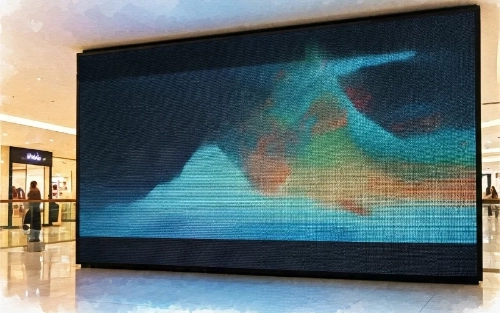
Indoor LED Display Options
1. Sizes
Indoor LED display options come in various sizes, ranging from small screens for retail spaces to large displays for stadiums and event venues. These screens can cater to different needs, providing flexibility in choosing the right size based on the space available.
2. Pixel Pitches
Pixel pitches play a crucial role in determining the resolution and clarity of LED displays. Lower pixel pitches, such as P1.53mm, offer high resolution and sharp image quality, making them ideal for applications requiring detailed visuals like virtual productions and presentations.
3. Benefits of High-Resolution Displays
Investing in high-resolution displays like P1.53mm brings several advantages. The crisp image quality enhances viewer experience, making visuals appear vibrant and engaging. For virtual productions, where every detail matters, these displays ensure that the content is delivered with precision.
4. Versatility in Settings
Indoor LED displays are highly versatile and find applications in various settings. From events and trade shows to advertising and corporate presentations, these displays can adapt to different environments seamlessly. Their flexibility makes them a popular choice for businesses looking to showcase their products or services effectively.
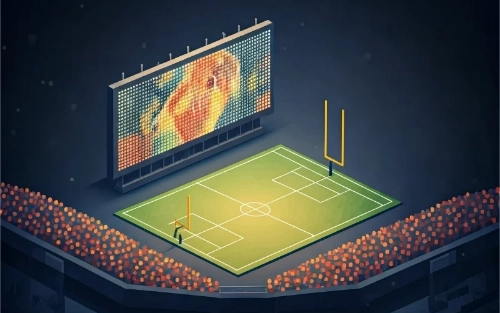
Outdoor LED Display Options
1. Durability
Outdoor LED display screens are designed to withstand harsh weather conditions, making them durable for long-term outdoor use. The leds used in these displays are specifically built to be weatherproof, ensuring longevity.
When considering outdoor LED display options, it's crucial to focus on durability to ensure the screen can withstand elements like rain, snow, and extreme temperatures. The modulesled configuration plays a significant role in enhancing the overall robustness of the display.
2. Visibility
One key factor that sets outdoor LED displays apart is their visibility even in bright sunlight. The high brightness levels of these displays ensure clear visibility during the day, capturing the attention of passersby effectively.
The type of LED display selected greatly impacts its visibility. Displays with a smaller pixel pitch, such as P3.91mm, offer higher resolution and sharper images, enhancing visibility even from a distance.
3. Double LED Display Options
Double LED display options involve using two layers of LEDs to create a more vibrant and dynamic visual experience. This setup enhances the brightness and color saturation of the display, making it ideal for outdoor environments with high ambient light.
Advantages of double LED display options include improved contrast ratio, better color accuracy, and enhanced viewing angles. These displays are particularly beneficial for outdoor events, advertising boards, and sports stadiums where visibility is paramount.
Applications of LED Displays
1. Entertainment Industry
LED displays have revolutionized the entertainment industry by providing vibrant visuals and immersive experiences at concerts, music festivals, and sporting events. These displays create a dynamic atmosphere that captivates audiences and enhances their overall enjoyment.
Incorporating LED screens into stage designs allows for stunning visual effects, dynamic content display, and real-time interaction with the audience. This technology enables performers to engage with their fans on a whole new level, creating unforgettable moments and enhancing the overall entertainment value.
2. Advertising Sector
In the realm of digital marketing, LED displays play a crucial role in capturing consumer attention and delivering impactful advertising messages. These displays are commonly used in retail stores, shopping malls, and transportation hubs to showcase products, promotions, and brand campaigns.
The high brightness and clarity of LED screens ensure that advertisements are eye-catching and easily visible even in bright environments. This feature makes them an effective tool for brands to communicate their messaging effectively to a wide audience.
3. Public Spaces and Events
LED displays are widely utilized in public spaces such as city centers, stadiums, and transportation terminals to provide information, entertainment, and enhance the overall ambiance. These displays serve as interactive communication platforms that engage passersby and visitors.
By displaying real-time updates, news feeds, and event schedules, LED screens help improve wayfinding and provide valuable information to the public. Their versatility allows for customized content delivery based on the specific needs of different locations and events.
4. Broadcasting and Live Events
In broadcasting and live events, LED technology has become a staple for delivering high-quality visuals to viewers worldwide. These displays are used in TV studios, concert venues, and sports arenas to broadcast live performances, sporting events, news broadcasts, and more.
LED screens offer seamless integration with cameras and video sources, ensuring smooth transitions between different shots and angles. Their ability to display sharp images with vivid colors enhances the viewer's experience, making them feel like they are part of the action.
Key Specifications of LED Displays
1. Resolution
Resolution is a crucial factor to consider when choosing an LED display screen. It determines the clarity and sharpness of the content displayed. Higher resolution ensures crisp images and text, making it ideal for applications requiring detailed visuals such as advertising or video displays.
2. Brightness
Brightness plays a significant role in the visibility of content on an LED display screen, especially in well-lit environments. A higher brightness level enhances visibility, ensuring that the content remains clear and vibrant even in direct sunlight or brightly lit indoor settings. For outdoor applications, a brightness level of at least 5,000 nits is recommended to combat glare and maintain visibility.
3. Refresh Rates
Refresh rates refer to how often the image on the display is updated per second. A higher refresh rate results in smoother motion graphics and reduces motion blur, crucial for applications like sports events or fast-paced video content. Opting for a display with a refresh rate of 120Hz or higher ensures seamless performance.
4. Indoor vs. Outdoor Models
When comparing specifications between indoor and outdoor LED display screens, several key differences come into play. Outdoor displays typically have higher brightness levels to combat ambient light and are designed to withstand varying weather conditions. On the other hand, indoor displays focus more on color accuracy and contrast ratio to deliver optimal image quality in controlled lighting environments.
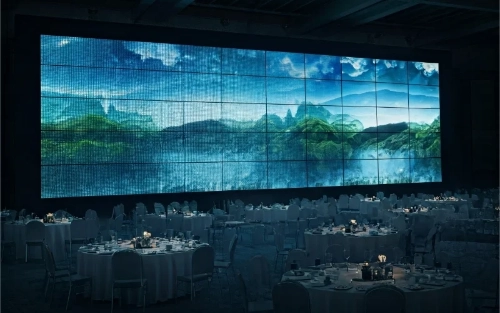
Features and Enhancements
1. Smart Connectivity
Modern LED displays come equipped with smart connectivity features, allowing seamless integration with various devices. This enhances user experience by enabling easy access to content from smartphones, laptops, and other gadgets. The additional features of smart connectivity ensure a hassle-free setup and operation.
2. Color Accuracy and Contrast Ratios
Enhancements in LED display technology have significantly improved color accuracy and contrast ratios, resulting in vibrant visuals with true-to-life colors. These advancements enhance the viewing quality, making images and videos appear sharper and more realistic. Users can now enjoy an immersive visual experience with enhanced clarity and detail.
3. Customizable Options
LED displays offer various configurations to cater to specific user needs. From screen size to resolution settings, users have the flexibility to customize their display according to their preferences. This flexibility allows for a personalized viewing experience, whether for gaming, multimedia entertainment, or professional use.
Viewing Distance Considerations
1. Pixel Pitch
Pixel pitch refers to the distance between the center of an LED pixel to the center of the adjacent pixel. A smaller pixel pitch results in higher resolution and a closer optimal viewing distance.
Determining the optimal viewing distance for an LED display involves considering the pixel pitch and screen size. For instance, a screen with a smaller pixel pitch requires the audience to be closer to perceive details clearly.
2. Screen Size
The screen size of an LED display is crucial in determining the ideal viewing distance. Larger screens typically require viewers to be farther away for an optimal viewing experience.
When selecting an LED display, it is essential to consider the viewing distance based on the pixel pitch and screen size to ensure that the audience can fully appreciate the content displayed.
3. Impact on Audience Experience
The viewing distance significantly impacts the overall experience of the audience. Being too close to a large LED display with a low pixel pitch can result in a pixelated image, reducing clarity.
On the other hand, being too far from a small LED display with a high pixel pitch may cause viewers to miss out on intricate details. Therefore, finding the optimal viewing distance enhances viewer engagement and satisfaction.
Supports and Accessories
1. Mounting Solutions
LED display screens often require secure mounting solutions to ensure stability and durability. Mounting options include wall mounts, ceiling mounts, and floor stands. These solutions provide flexibility in positioning the displays for optimal viewing angles.
When installing outdoor LED displays, protective casings are essential to shield the screens from harsh weather conditions. These casings are typically weatherproof and impact-resistant, safeguarding the displays from rain, sunlight, dust, and physical damage.
2. Additional Components
Apart from the display itself, LED screens rely on controllers and video processors for seamless operation. Controllers manage the content displayed on the screen, enabling users to schedule and customize visuals effectively. Video processors enhance image quality by optimizing color balance and resolution.
- Pros of Mounting Solutions:
- Ensures stability and durability
- Provides flexibility in positioning
- Cons of Protective Casings:
- May add extra weight to the display
- Could increase overall costs
- Key Components for Optimal Performance:
- Controllers for content management
- Video processors for image enhancement
3. Rigging and Transport Options
For large LED display setups in venues such as shopping centers, construction sites, or entertainment venues, rigging systems are crucial for safe installation. These systems facilitate the suspension of displays from ceilings or trusses securely.
When it comes to transport, LED display screens are often packaged in protective cases for safe shipping. The packaging includes shock-absorbent materials to prevent damage during transit, ensuring that the displays arrive intact at their destination.
Pricing and Selection Guide
1. Factors Influencing Pricing
When it comes to pricing quote for LED display screens, several factors play a crucial role. Size is a primary determinant, with larger screens typically costing more due to the increased amount of materials required. The technology used in the display also impacts the price, with advanced features such as higher resolution or interactive capabilities leading to higher costs. Understanding these factors can help in making an informed decision when budgeting for an LED display screen.
2. Tips for Selecting Options
To effectively select options for an LED display screen, it's essential to consider your budget and application needs. Begin by determining the specific purpose of the display – whether it's for advertising, information dissemination, or entertainment. Next, evaluate the viewing distance and ambient lighting conditions to choose the appropriate screen resolution and brightness levels. By aligning your selection with your budget and intended use, you can ensure that you get the best value for your investment.
3. Importance of Considering Long-Term Value
When placing an order for an LED display screen, it's crucial to look beyond the initial purchase price and consider the long-term value and maintenance costs. Opting for a high-quality display may require a larger upfront investment but can result in lower maintenance expenses over time. Selecting a reputable manufacturer with a track record of producing durable and reliable displays can contribute to long-term cost savings by reducing the frequency of repairs and replacements.
Closing Thoughts
In exploring the world of LED display screens, you've gained insights into the types available, from indoor to outdoor options. Understanding their applications and key specifications equips you to make informed decisions. Features, enhancements, viewing distance considerations, and accessories play crucial roles in optimizing your experience. Pricing details and our selection guide offer valuable assistance in your purchasing journey. As you delve into this realm, remember to prioritize quality, suitability, and support to maximize the benefits of your LED display screen.
Invest time in researching further to match your needs precisely with the ideal LED display solution. Your thorough understanding will lead to a successful integration of these innovative screens into your space or events, enhancing visual experiences for all. Stay informed and explore the possibilities that LED displays can bring to your environment.
Frequently Asked Questions
1. What are the key specifications to consider when choosing an LED display screen?
LED display screens vary based on resolution, brightness, refresh rate, and viewing angle. Consider these factors to ensure optimal performance in your specific setting.
2. Are outdoor LED display screens suitable for all weather conditions?
Yes, outdoor LED displays are designed to withstand various weather conditions like rain, snow, and sunlight. They are built with durable materials and protective coatings for long-lasting performance.
3. How can I determine the ideal viewing distance for an LED display screen?
The viewing distance depends on the pixel pitch of the LED screen. As a general rule, multiply the pixel pitch by 10 to get the optimal viewing distance in meters. This ensures clear and sharp visuals for viewers.
4. What are some common applications of LED display screens?
LED displays are widely used for advertising, information dissemination, event promotion, scoreboards, wayfinding systems, and digital signage in retail stores, stadiums, transportation hubs, and corporate settings.
5. Do LED display screens come with accessories included or do they need additional support equipment?
While some LED displays may come with basic accessories like mounting brackets, power cables, and control software, additional support equipment such as video processors, signal extenders, and content management systems may be required for optimal functionality.





